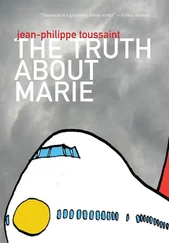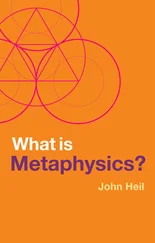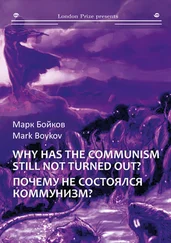This worrisome predicament has prompted desperate responses. Perhaps conscious worries are an illusion; there are no such things, and we have been worrying over nothing. Or perhaps conscious worries are real and caused by biology, but evolution has not equipped us with the concepts we need to understand how; if so, then the biological provenance of worry will remain a mystery to us, at least until we chance upon a mutation that endows the needed concepts.
What should we be worried about? This Edge Question itself implies an assumption that worry has causal powers—that if, for instance, we worry about the right topics, then this worry might prompt productive problem solving.
But does the conscious experience of worry really have causal powers? If we answer yes, then we must explain how its causal powers are related to those of biology. Once again, we face an unsolved mystery. Thus many biologists answer no. They assume, that is, that the brain somehow causes conscious worries but that conscious worries, and conscious experiences more generally, cause nothing. This successfully exorcises the mystery of causation only to introduce another mystery: How and why did conscious experiences evolve? Natural selection can select only among traits that have causal consequences for fitness. If conscious experiences have no causal consequences, then a fortiori they have no consequences for fitness and thus are not subject to natural selection. So the experience of worry is not a product of natural selection: a worrisome conclusion.
Well, what should we be worried about? We should be worried about what we’re really doing when we worry. Unless, of course, there are no worries or worries do nothing. If there are no worries, then there is nothing to worry about, and it makes no sense even to advise “Don’t worry, be happy.” If there are worries but they do nothing, then you can worry or not, as you please—it makes no difference. But the worry is that there really are worries, that worries really do something, and that what they are, how they arise, and what they can do is, for now, a mystery.
BARBARA STRAUCH
Science editor, New York Times ; author, The Secret Life of the Grown-up Brain
Every day, as science editor of the New York Times , I think about how we convey increasingly complex science to the general public. How do we explain the apparent discovery of the Higgs boson and help our readers understand what an enormous, astonishing—even beautiful—discovery it is?
Luckily, here at the Times we have writers like Dennis Overbye, who not only deals every day with the science of the cosmos but who can write about it with the poetry it often deserves.
Luck is an important ingredient here. The Times remains committed to a deep coverage of science. But such a commitment feels increasingly lonely. Over the past several years, I have watched science and health coverage by general-interest newspapers shrink. As a health and science editor, I used to pick up other major newspapers with trepidation, knowing there might be a good story we missed or an important angle we overlooked. The Times had serious competition.
Today, sadly, that is often not the case. Coverage of health and science in general-interest newspapers has declined dramatically. Reporters whose work I have long admired have moved on to other things or retired or been fired, as science staffs have been slashed. True, there are many, many more good Web sites and some excellent blogs covering a wide range of science topics, but most are aimed at smaller segments of readers, who search out information focused in specific areas. Some general-interest papers in other countries continue to value science coverage, but unless you’re a reader with access to those publications, that doesn’t help much.
Something quite serious has been lost. And of course this has ramifications not only for the general level of scientific understanding but also for funding decisions in Washington—and even access to medical care. And it’s not good for those of us at the Times , either. Competition makes us all better.
This decline in general-interest science coverage comes at a time of divergent directions in the general public. At one level, there seems to be increasing ignorance. After all, it’s not just science news coverage that has suffered but also the teaching of science in schools. And last year we went through a political season that showed how all this can play out, with major political figures spouting off one silly statement after another, particularly about women’s health (most memorably Missouri Republican Senate candidate Todd Akin: “If it’s a legitimate rape, the female body has ways to try to shut that whole thing down”). Here at the Times we knew the scientific discourse on these topics had gotten so ridiculous—and dangerous—that we launched a team of reporters on a series we called “Political Science,” with a string of stories that tried to set the scientific record straight.
But something else is going on as well. Even as there seems to be, in some pockets, an increasing ignorance of science, there is a growing interest in it. It’s easy to see, from where I sit, how high that interest is. Articles about anything scientific, from the current findings in human evolution to the latest rover landing on Mars, not to mention new genetic approaches to cancer—and yes, even the Higgs boson—zoom to the top of our newspaper’s most e-mailed list.
We know our readers love science and cannot get enough of it. And it’s not just our readers. As the rover Curiosity approached Mars, people of all ages in all parts of the country had Curiosity parties to watch news of the landing. Mars parties! Social media, too, has shown us how much interest there is across the board, with YouTube videos and tweets on science often becoming instant megahits.
So what we have is a high interest and a lot of misinformation floating around. And we have fewer and fewer places that provide real information to a general audience that’s understandable, at least by those of us who do not yet have our doctorates in astrophysics. The disconnect is what we should all be worried about.
Still, I should also take a moment to mention a few things I’m worrying less about. And this, too, is a bit of a contradiction. In some cases, in my dozen or so years in the Science Department at the Times , I have watched as our readers—all of us, actually—have become more sophisticated. Misunderstanding and hype have not gone away, but over the last decade we all have gained a more nuanced understanding of how our medical-industrial complex operates—and the money that often drives it. And we have a clearer understanding of the complexity of common diseases, from mental illness to heart disease to Alzheimer’s. We have reached a common understanding that there is no magic bullet to fix such diseases or even address the problems in our health care system.
While we still have a long way to go, the conversation is beginning to change in these areas and others. The constant drumbeat about obesity is, as we reported recently, showing some signs of having an impact: Obesity rates are edging downward in children. We all understand, too, that medicine has gotten too expensive and that there is a lot of overtreatment going on in this country. Again, we have moved past the point of thinking there are quick solutions to these issues. But more people are talking about such topics—at least a little here and there—without so much shouting about death panels.
In a few of these areas, I am, when I think about it, oddly hopeful.
SCIENCE BY (SOCIAL) MEDIA
Читать дальше












